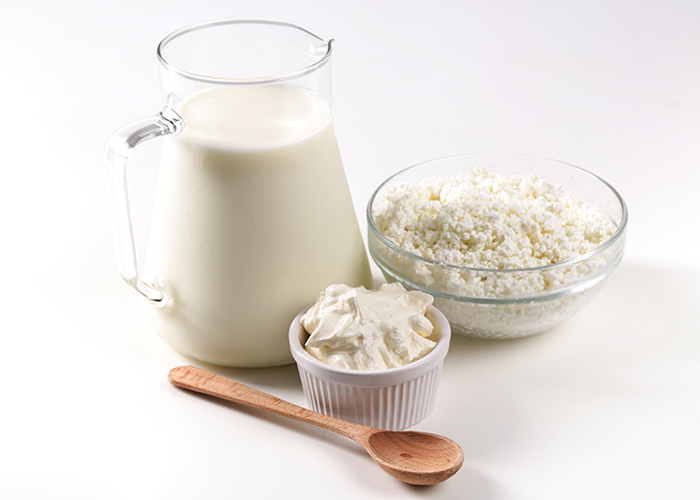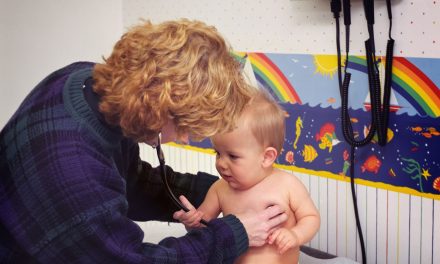In addition to vaccinations, taking care of your child’s dietary needs is important. You have to note down if their body responds in a certain way and accordingly decide what’s best for them. Lactose intolerance in babies is a pretty common affair. It is a condition where milk is indigestible, so knowing its symptoms and the manner how it’s treated is necessary. Keep reading our article to know more about its causes, and how it can be diagnosed.
What Is Lactose Intolerance?
Lactose is present in cow’s milk and other dairy products. Breast milk contains about 7% of this sugar. The cells along the walls of the small intestine produce the enzyme, lactase, which helps in digesting lactose. When the body doesn’t produce enough of this enzyme for digestion, it leads to lactose intolerance, which in turn causes gastrointestinal issues.

Milk becomes indigestible for babies suffering from lactose intolerance.
Premature babies are affected the most because their bodies are unable to produce sufficient quantities of this enzyme. But, in most cases, as babies grow older, the lining of the intestines returns to normal and then enough lactase is produced. However, this may not be the case with everyone. So, it’s best to consult with your doctor about the precautions you might need to take.
Milk, being the baby’s primary nutrition can pose a lot of problems and inconvenience if the child is lactose intolerant. And the condition can worsen especially when a new mother is unaware of her child’s lactose intolerance problem.
Identifying Lactose Intolerance
Symptoms of lactose intolerance may develop after 30 minutes or even after 2 hours after feeding. The symptoms in each child will differ from the other. But, these are some general identifiers that’ll help you to recognize lactose intolerance in your child:
- Loose stools, or diarrhea
- Intense colic pain
- Absurd increase of gas levels after feeding
- Excessive bloating
- Nausea
If the above symptoms repeat after every feed, accompanied by continuous crying, then it may be time to visit your doctor.
Since babies don’t have a proper way to communicate their pain, knowing if your baby has stomach pain gets a bit tricky. But, they have certain signs or fall into particular postures to express this pain. This includes:
- Continuous kicking
- Clenched fists
- Crying while passing gas
- Arching their backs to relieve gas
Causes Of Lactose Intolerance
Lactose intolerance can be due to poor production of lactase or it could be due to other underlying reasons as well. Some of these are:
- Damage to the small intestine.
- Digestive infections or diseases.
- Premature birth. But, the symptoms could go away as the child grows older.
- Genetics: In some cases, if both parents have faulty genes then lactose intolerance could also be passed genetically to the child.
Lactose Intolerance vs A Milk Allergy
There could be a possibility that your child is allergic to milk instead. So, it’s important to consider this potential outcome as well. The symptoms between lactose intolerance and milk allergies are closely related. Therefore, it’s easy to get confused between the two, but in reality, they are two separate conditions.
A milk allergy is a type of food allergy where the immune system reacts to any dairy products. Symptoms similar to lactose intolerance such as diarrhea or an upset stomach may occur. But, you have other symptoms that develop; symptoms that don’t occur when one has lactose intolerance:
- Coughing
- Swelling
- Itching
- Wheezing
- Watery Eyes
- Vomiting
If you notice any of these symptoms, even if they’re mild, contact your physician immediately. If left untreated, these symptoms can lead to complications such as labored breathing and an extreme drop in blood pressure.
How Is Lactose Intolerance Diagnosed
Your doctor will first check your family history, and then check your child via a physical examination. They might suggest a series of tests to do to check how lactose is being absorbed into the system.
- Lactose Tolerance Test: This test checks how your child’s digestive system reacts to lactose. Your child is given a liquid containing lactose after fasting, and then the loose stools are tested for the next 24 hours.
- Hydrogen Breath Test: Your child is again given a liquid containing lactose. And their breath is checked at regular intervals to measure the intensity of hydrogen. If hydrogen levels are high, it means that your child has lactose intolerance.
- Stool Acidity Test: This test determines the acid intensity in your baby’s stools. If your child is lactose intolerant, the reports will show the presence of lactic acids along with glucose, and fatty acids.
Treatment Of Lactose Intolerance
Depending on your child’s symptoms, age, and general health, lactose intolerance is treated. The severity of the symptoms plays an important part in the treatment as well.
However, there’s no particular treatment to help the body produce more lactase. You’ll just have to make small changes in your baby’s diet plan – preferably, by cutting down foods containing lactose. Your pediatrician might suggest lactase enzyme supplements, which are sold over the counter.
Here are some ways you can manage your child’s diet:
- You will have to limit dairy products once you know that your baby is lactose intolerant for at least a week. After that period, slowly introduce your child to small amounts of milk products. Check if they have any symptoms. Keep a diary and take note of foods that your child can digest, and ones that cannot be digested.
- Also, you may notice that your child might have fewer symptoms if they have milk or milk products along with their meals. Try feeding your child cheese with crackers, or milk with cereal.
- When you’re buying any milk product, see that they’ve low levels of lactose. You can start with hard cheeses and yogurt.
- If your child is severely lactose intolerant, then try buying lactose-free milk products. They’re easily available, and they’re just like normal milk products. The only difference is they have the lactase enzyme added to them.

Lactose intolerance in babies may not be easily recognizable in the early stages. You should consult your doctor if you notice anything unusual.
Conclusion
Many factors contribute to lactose intolerance in babies, it being genetic is one of them. However, it can be treated easily just by monitoring your child’s diet and following the advice of your pediatrician. If you need help in scheduling appointments, you can do so by downloading the ImmunifyMe app. You can have appointments virtually, thus breaking all barriers of distance, in turn enhancing convenience. You can store prescriptions digitally and also monitor your child’s growth progress through the app.
FAQs On Lactose Intolerance In Babies
What Are The Symptoms Of Lactose Intolerance In Babies?
If you notice any of the following symptoms happening regularly, it may seem that your child is lactose intolerant:
- Loose stools, or diarrhea
- Intense colic pain
- Absurd increase of gas levels after feeding
- Excessive bloating
- Nausea
What Does Lactose Intolerance Poop Look Like In Babies?
It’ll be loose and watery. They will also be acidic – you’ll notice your child having increased bouts of diaper rash on their bottom, which is a sign of skin irritability.
How Do You Test A Baby For Lactose Intolerance?
Your doctor will advise any of the following three tests to determine the intensity of lactose intolerance:
- Lactose Tolerance Test
- Hydrogen Breath Test
- Stool Acidity Test






